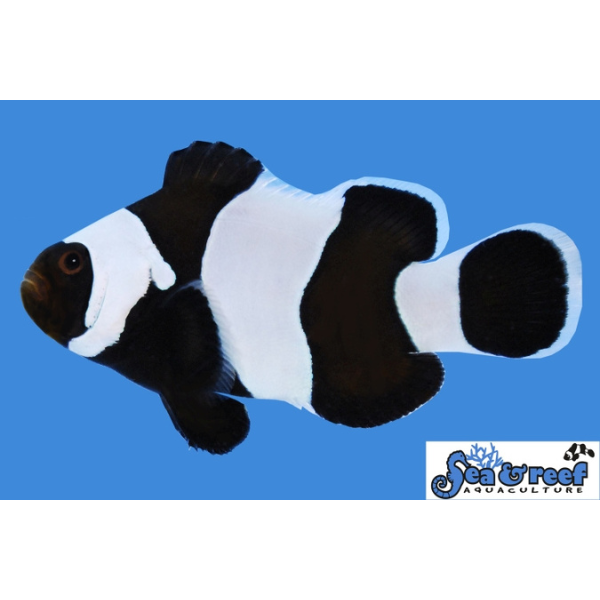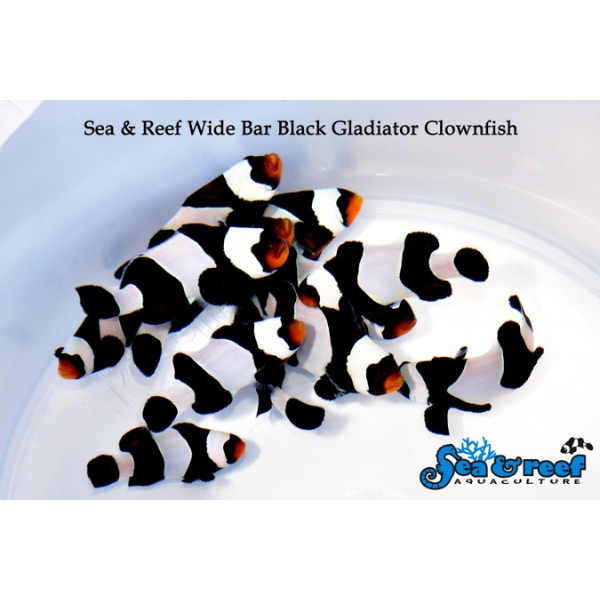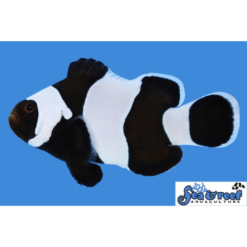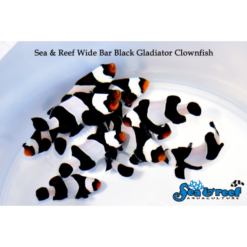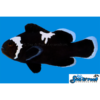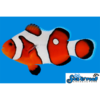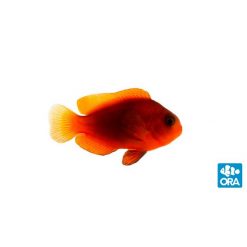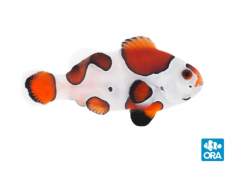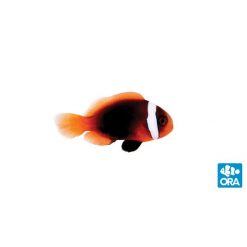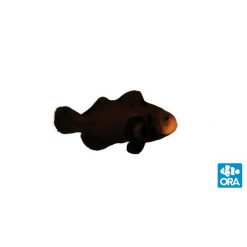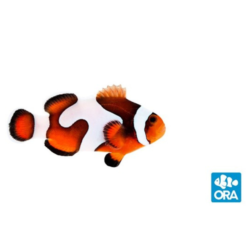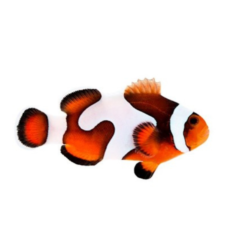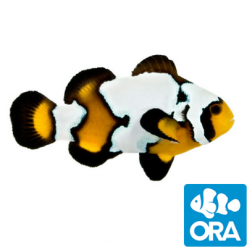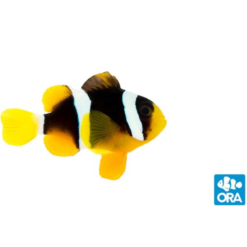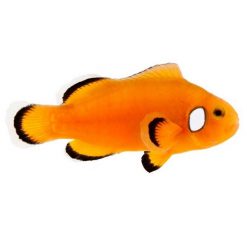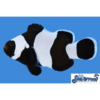About the S&R Wide Bar Black Gladiator Clownfish Captive Bred
Care Level: Easy
Temperament: Peaceful
Reef Safe: Yes
Diet: Omnivore
Invertebrate Safe: 3 inches
Minimum Tank Size: 10 Gallons
The Wide Bar Black Gladiator Clownfish is a new Sea & Reef signature designer clownfish. It is developed from the Wide Bar Mocha Gladiator Ocellaris Clownfish, which has much wider white bars than a regular Ocellaris Clownfish. In fact the white bars are about twice as wide compared to that of a regular ocellaris (or Darvin Ocellaris) clownfish. We created our Wide Bar Black Gladiator Clownfish by breeding our Wide Bar Mocha Gladiator Ocellaris Clownfish with our super black Darwin Ocellaris Clownfish through several generations to produce an all Black and White version of this gorgeous designer clownfish. Like the Darwin Ocellaris Clownfish the Wide Bar Black Gladtiator Clownfish starts out more brown than black. As they grow they develop their deep black coloration. The last part of the fish to turn black is the area around their mouth, which typically happens when the fish is about 2″ long.
The original Wide Bar Gladiator Ocellaris Clownfish was first bred by legendary fish breeder Bill Addison, owner of C-Quest hatchery, who created and named this designer clownfish. The production of Wide Bar Gladiator Ocellaris by C-Quest stopped in 2010 when the hatchery closed. Sea & Reef acquired some of the original Wide Bar Gladiator Ocellaris Clownfish stock and in February of 2014 we brought this beautiful designer clownfish back. We are proud to continue the development of this designer clownfish by giving you the Wide Bar Mocha Gladiator Clownfish and now the Wide Bar Black Gladiator.
This Clownfish does not need an Anemone to survive, but will accept many different Anemones as its host, including corals. Their favorite Anemones to call home are the Carpet Anemones Stichodactyla Gigantea or the Magnificent Anemone Heteractis Magnifica.
These fish will accept most fish foods and are perfect for reef tanks. More than one can be kept in the same aquarium and they prefer to be kept in groups.
Clownfish have a very distinct swimming motion that is different from most fish. This is likely passed on through their genetic makeup from centuries of wiggling within the tentacles of Anemones. As the Clownfish wiggles within the stinging tentacles the Anemone’s mucus is likely smeared over the Clownfish’s body, which then protects it from additional stings.
In the wild they live in small groups with one large dominant female, one smaller sexually active male, and a handful of smaller males and juveniles. When the female is lost the largest male will then change sex and become the dominant female with the other Clowns moving up the ladder behind it.

